Related Research Articles
Robotic mapping is a discipline related to computer vision and cartography. The goal for an autonomous robot is to be able to construct a map or floor plan and to localize itself and its recharging bases or beacons in it. Robotic mapping is that branch which deals with the study and application of ability to localize itself in a map / plan and sometimes to construct the map or floor plan by the autonomous robot.
Tele Atlas is a Netherlands-based company founded in 1984 which delivers digital maps and other dynamic content for navigation and location-based services, including personal and in-car navigation systems, and provides data used in a wide range of mobile and Internet map applications. Since 30 July 2008, the company has been a wholly owned subsidiary of automotive navigation system manufacturer TomTom.
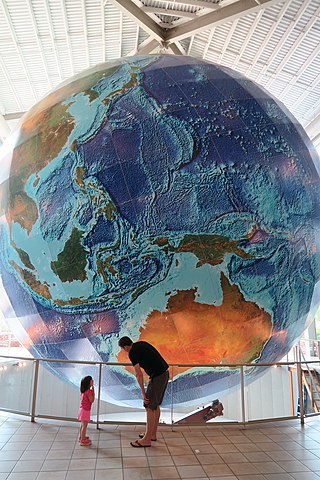
DeLorme Publishing Company is a producer of personal satellite tracking, messaging, and navigation technology. The company's main product, inReach, integrates GPS and satellite technologies. inReach provides the ability to send and receive text messages to and from anywhere in the world by using the Iridium satellite constellation. By pairing with a smartphone, navigation is possible with access to free downloadable topographic maps and National Oceanic and Atmospheric Administration (NOAA) charts. On February 11, 2016, the company announced that it had been purchased by Garmin, another multinational producer of GPS products and services.

An automotive navigation system is part of the automobile controls or a third party add-on used to find direction in an automobile. It typically uses a satellite navigation device to get its position data which is then correlated to a position on a road. When directions are needed routing can be calculated. On the fly traffic information can be used to adjust the route.
Navteq Corporation was an American Chicago-based provider of geographic information system (GIS) data and a major provider of base electronic navigable maps. The company was acquired by Nokia in 2007–2008, and fully merged into Nokia in 2011 to form part of the Here business unit. The unit was subsequently sold to a consortium of German auto makers in 2016.
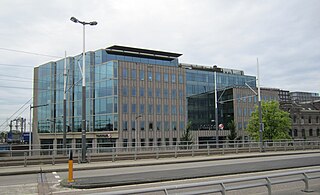
TomTom N.V. is a Dutch multinational developer and creator of location technology and consumer electronics. Founded in 1991 and headquartered in Amsterdam, TomTom released its first generation of satellite navigation devices to market in 2004. As of 2019 the company has over 4,500 employees worldwide and operations in 29 countries throughout Europe, Asia-Pacific, and the Americas.
A navigation system is a computing system that aids in navigation. Navigation systems may be entirely on board the vehicle or vessel that the system is controlling or located elsewhere, making use of radio or other signal transmission to control the vehicle or vessel. In some cases, a combination of these methods is used.
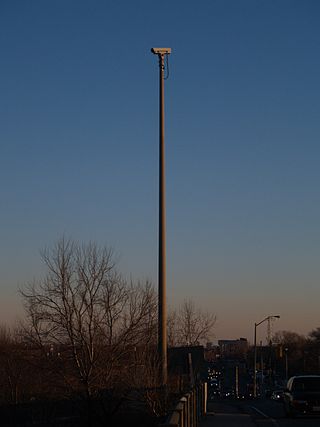
Traffic reporting is the near real-time distribution of information about road conditions such as traffic congestion, detours, and traffic collisions. The reports help drivers anticipate and avoid traffic problems. Traffic reports, especially in cities, may also report on major delays to mass transit that does not necessarily involve roads. In addition to periodic broadcast reports, traffic information can be transmitted to GPS units, smartphones, and personal computers.
The Catalyst Technologies Venture Capital Group was one of the first technology company incubators. It was founded in 1981 in Sunnyvale, California by Atari co-founder Nolan Bushnell and received much assistance from fellow Atari luminary, Al Alcorn. The term Catalyst Group may refer to both the companies spawned by the Group and the people involved.
Magellan Navigation, Inc. is an American producer of consumer and professional grade global positioning system receivers, named after Ferdinand Magellan, the first explorer to circumnavigate the globe. Headquartered in San Dimas, California, with European sales and engineering centres in Nantes, France and Moscow, Russia, Magellan also produces aftermarket automotive GPS units, including the Hertz Neverlost system found in Hertz rental cars. The Maestro, RoadMate, Triton, and eXplorist lines are Magellan's current consumer offerings. The company also produces proprietary road maps (DirectRoute), topographic maps (Topo), and marine charts (BlueNav) for use with its consumer GPS receivers.
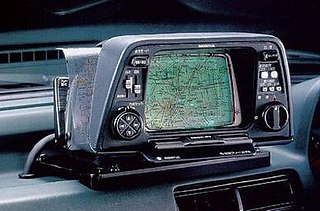
The Electro Gyro-Cator was claimed to be the world's first automated commercially available automotive navigation system. It was co-developed by Honda, Alpine, and Stanley Electric Co..

A satellite navigation device, satnav device or satellite navigation receiver is a user equipment that uses one or more of several global navigation satellite systems (GNSS) to calculate the device's geographical position and provide navigational advice. Depending on the software used, the satnav device may display the position on a map, as geographic coordinates, or may offer routing directions.

Navigon GmbH was a Würzburg, Germany-based manufacturer of GPS devices and GPS navigation software. The company was privately owned, until in June 2011, it was announced that Navigon was to be acquired by Garmin and become a subsidiary of the company. With effect from October 31, 2011, Navigon has changed its legal entity from corporation (Aktiengesellschaft) to GmbH.
GeoSmart (NZ) Ltd is a provider of location-based services, digital mapping data and images for the Oceania area, notably New Zealand. The company is one of only a handful of global companies producing digital maps for use in GPS applications. GeoSmart was acquired by TomTom in 2014.

Computer cartography is the art, science, and technology of making and using maps with a computer. This technology represents a paradigm shift in how maps are produced, but is still fundamentally a subset of traditional cartography. The primary function of this technology is to produce maps, including creation of accurate representations of a particular area such as, detailing major road arteries and other points of interest for navigation, and in the creation of thematic maps. Computer cartography is one of the main functions of geographic information systems (GIS), however, GIS is not necessary to facilitate computer cartography and has functions beyond just making maps. The first peer-reviewed publications on using computers to help in the cartographic process predate the introduction of full GIS by several years.
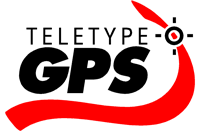
TeleType Co., Inc. is a privately held company in the United States, specialized in developing software for GPS devices. It was founded in 1981, under the name TeleTypesetting Company and it is based in Boston, Massachusetts. The company's product line includes automotive and commercial GPS navigation systems and other products including GPS receivers and tracking units. It develops and sells the WorldNav software for PC and Windows CE, tools for converting third party maps into WorldNav maps, an SDK and an API that allow the customization of the WorldNav application. TeleType Co. also offers consultancy services for those interested in acquiring and adapting the source code of their software products.

Red Hen Systems, Inc. is a technology company that develops integrated hardware and software for multimedia asset mapping. Their spatial digital video recorders (DVRs) and still cameras instantly geotag video and still photos at the time of data collection. Corresponding mapping software provides the capability to view photographs, video, and audio using GPS coordinates.
Telenav, Inc. is a wireless location-based services corporation that provides services including Global Positioning System (GPS) satellite navigation, local search, automotive navigation solutions, mobile advertising, enterprise mobility and workflow automation. The company’s headquarters are located in Santa Clara, California in the United States with additional offices in the U.S., Germany, Japan, Romania, China, and Brazil.
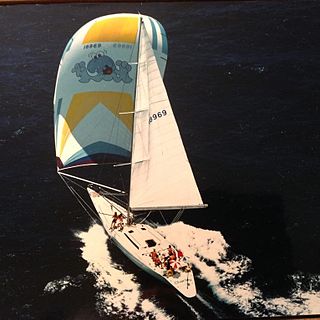
Stan Honey is an American professional offshore navigator with world sailing records and a businessman who founded Etak and Sportvision.
MapmyIndia is an Indian technology company that builds digital map data, telematics services, location-based SaaS and GIS AI technologies. The company was founded in 1995 and is headquartered at New Delhi with regional offices in Mumbai and Bengaluru and smaller offices across India. It also has international offices in the San Francisco Bay Area and Tokyo.
References
- ↑ Gauvin, Peter (1994-10-19). "Mapping the future". Palo Alto Online. Retrieved 2008-05-23.
- ↑ http://wiki.gis.com/wiki/index.php/Navteq
- 1 2 Etak's Forgotten story: Fast Company, June 2015
- ↑ "A Computer for the Driver Who Can't Find Anything", San Jose Mercury News, July 1985
- ↑ Dickson, Glenn (2000-07-24), Charting Sportvision's course, archived from the original on 2012-09-24, retrieved 2008-05-23
- ↑ Global Positioning System: Theory and Applications, Bradford W. Parkinson, James J. Spilker, p.294
- ↑ Navigation: principles of positioning and guidance, Bernhard Hofmann-Wellenhof, et al., p.16
- ↑ The Honda/Alpine Electro Gyrocator was introduced to the Japanese market in 1981. However, whether anyone bought a unit remains in doubt.
- ↑ "The Milwaukee Journal - Google News Archive Search". Archived from the original on July 21, 2012. Retrieved 3 February 2016.
- ↑ "Map matching augmented dead reckoning", Zavoli, W.B., Honey, S.K., in Proceedings of the 36th IEEE Vehicular Technology Conference, May 20–22, 1986
- ↑ Elmer-Dewitt, Philip (1987-04-20), "Driving by the Glow of a Screen", Time magazine, archived from the original on February 6, 2008
- ↑ Feder, Barnaby J., (1987-09-03), "Talking Deals; Big Partners In Technology" New York Times, 3 September 1987
- ↑ Faltermayer, Edmund (1992-09-07), "Does Japan Play Fair?", Fortune , CNN
- ↑ Schrage, Michael (1990-09-13), "Making Money With New Kinds of Media", Los Angeles Times, archived from the original on 2012-10-18, retrieved 2017-07-06
- ↑ "Sony begins shipping mobile navigation system with Etak digital maps" (Press release). Business Wire. 1995-01-13. Retrieved 2008-05-23.
- ↑ The first Location Based Service, 2014-03-01, retrieved 2017-08-06
- ↑ "Sony to Acquire Software Maker". New York Times. Bloomberg. 1996-05-14. Retrieved 2010-05-02.
- ↑ "Tele Atlas Acquires US-Based Mapping Company ETAK from Sony Corp of America", Directions Magazine, 2000-04-19, archived from the original on 2016-03-05, retrieved 2013-01-17